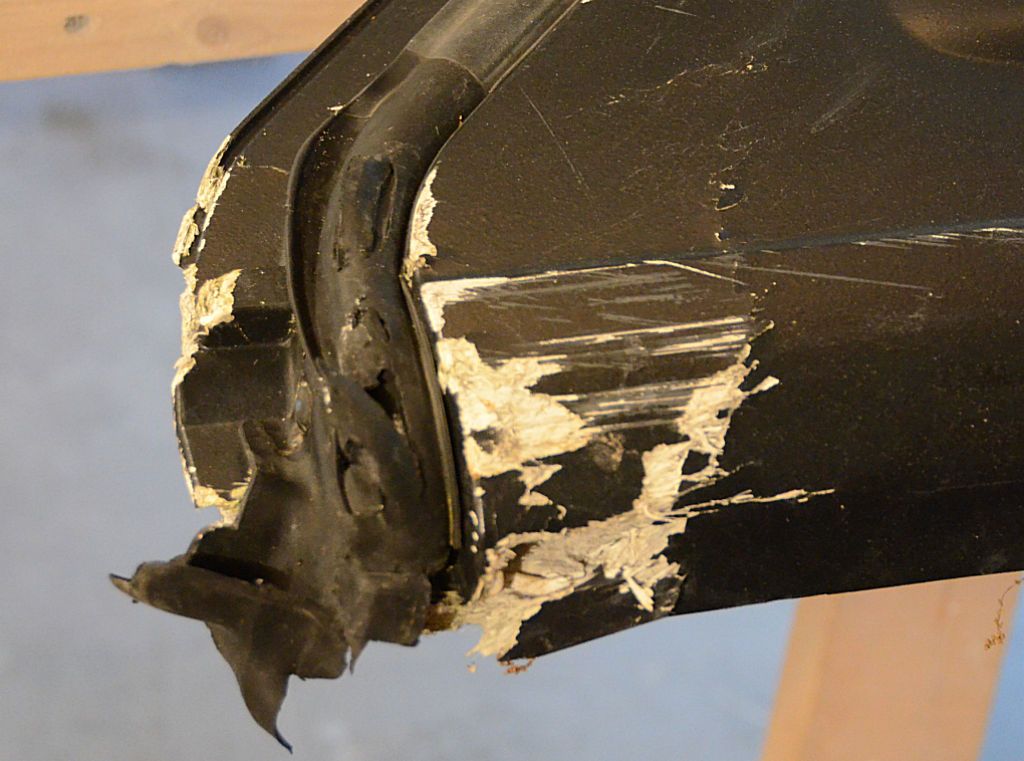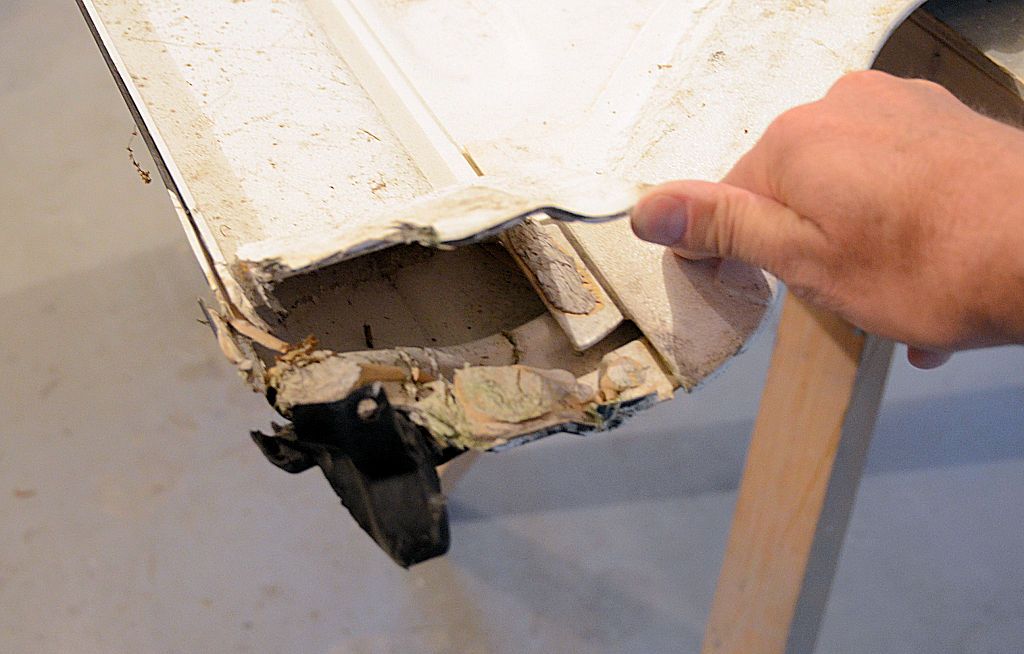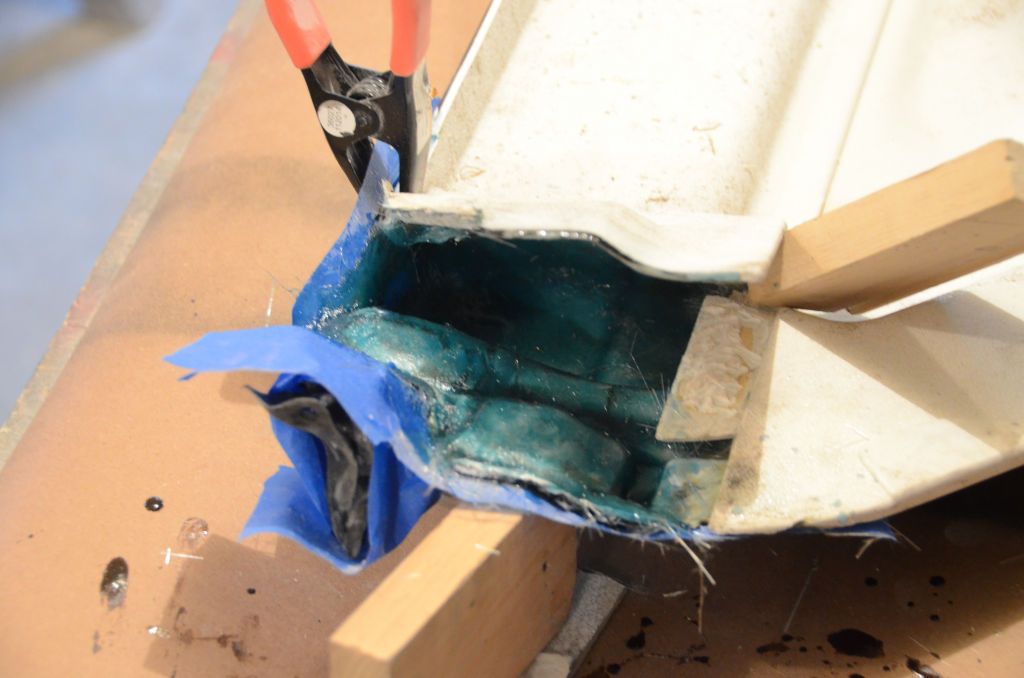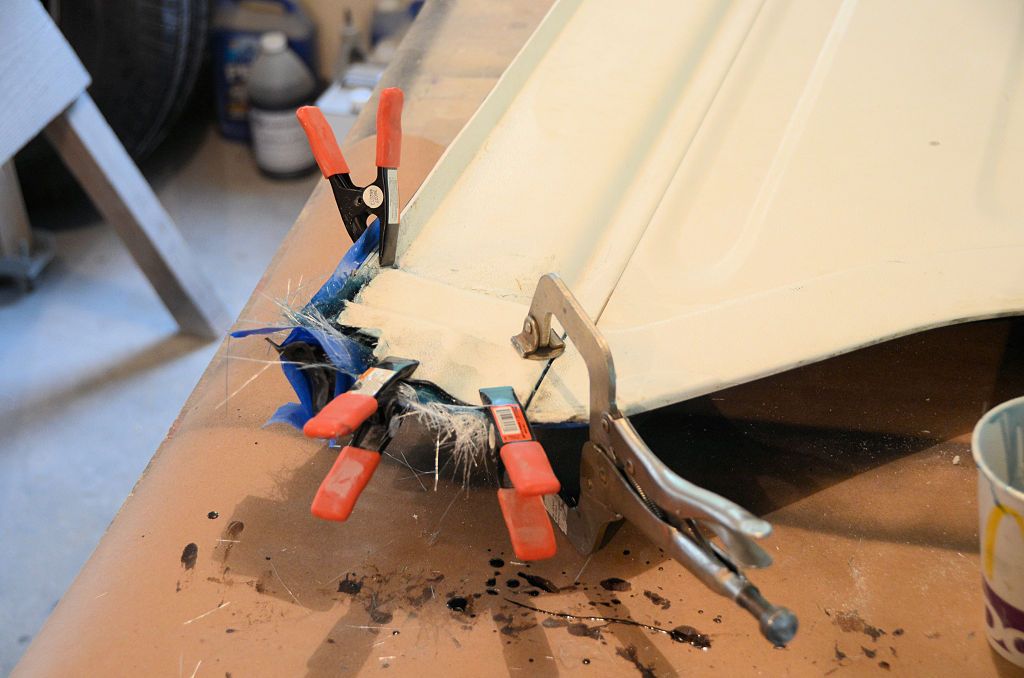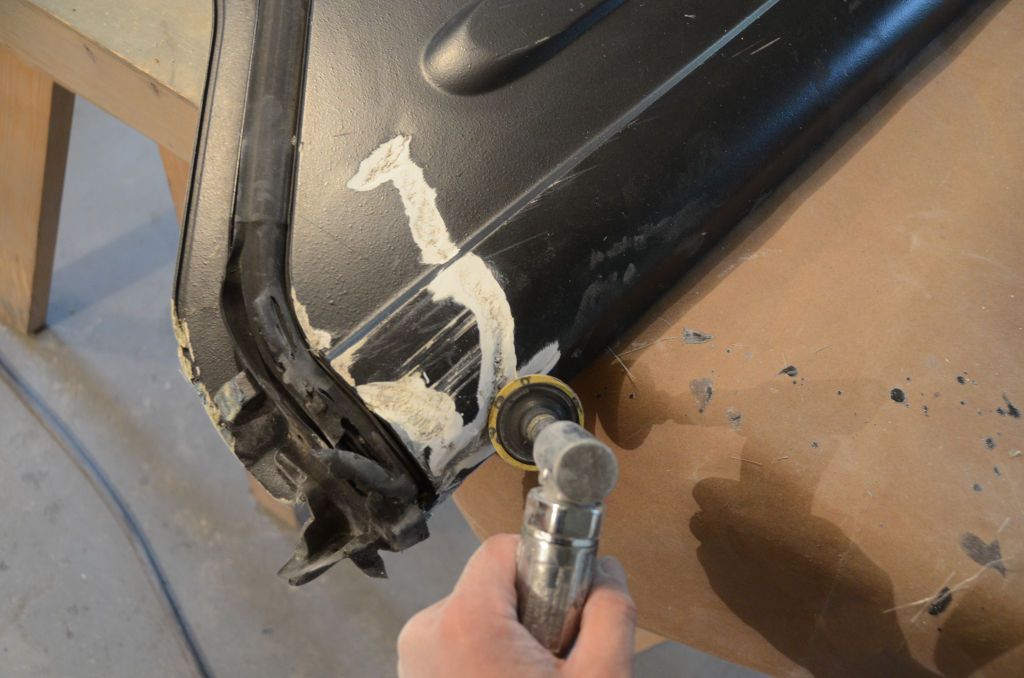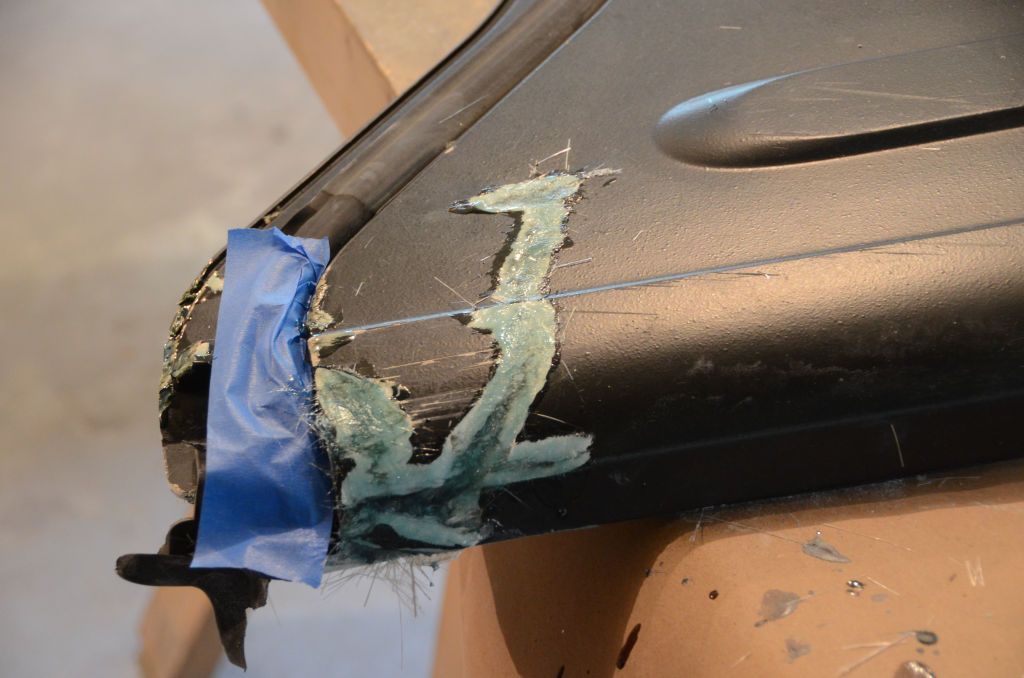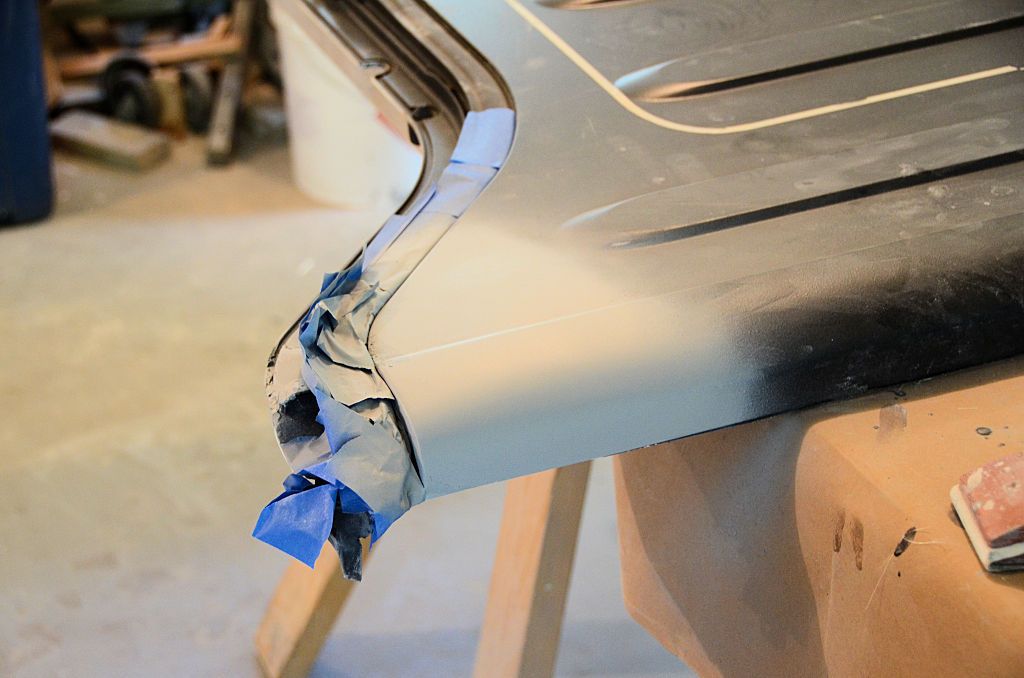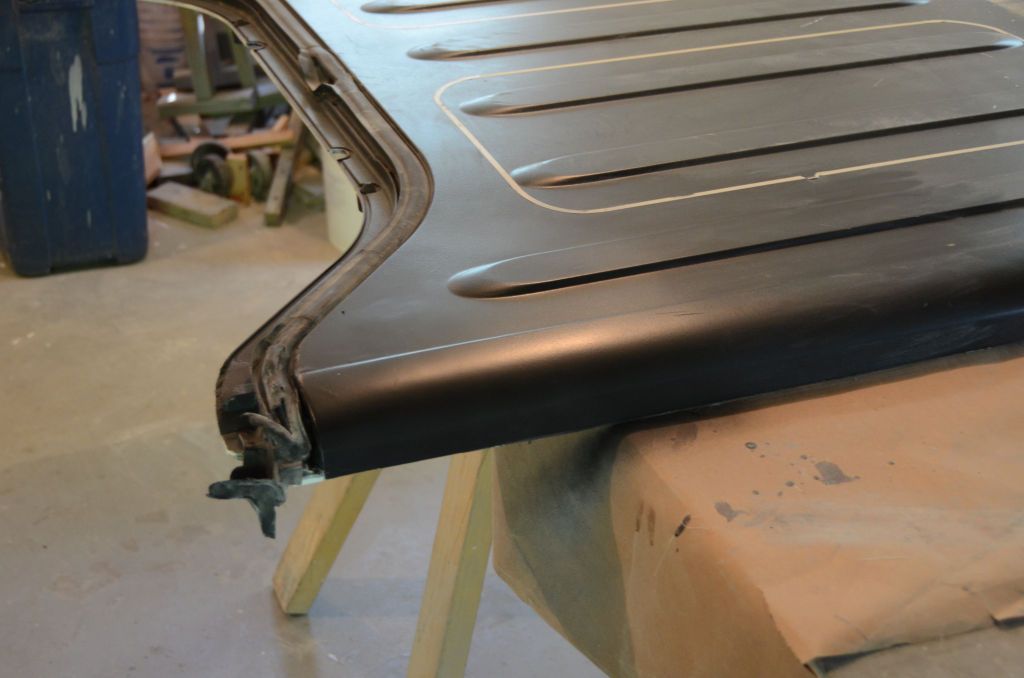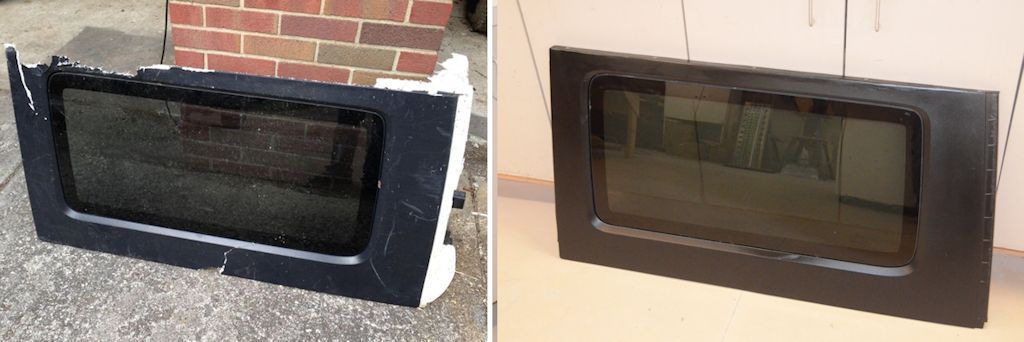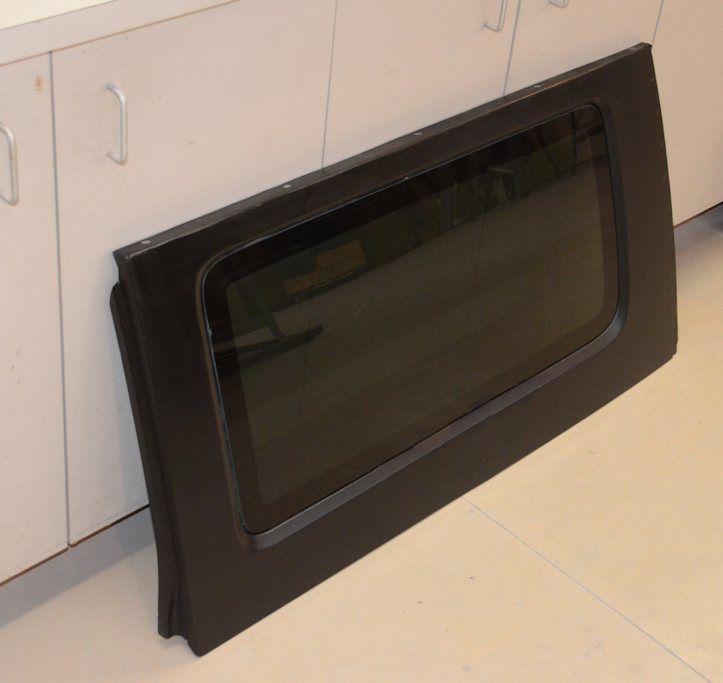I recently did a repair in a JK Freedom Panel which should illustrate the basic techniques to use on your repair. Here's the Freedom Panel damage:
The fiberglass is cracked to the point where it's no longer structurally sound and some of the outside skin is actually broken off and missing. The panel is double-walled, so access needs to be gained to the inside to properly make the repair. It turns out that in this case the inner wall was also cracked and broken so with a little more cutting I was able to separate the inner and outer shells for access to the inside of the outer shell.
In this next photo I've applied several layers of fiberglass mat soaked in SMC-compatible resin to the inside of the repair area. I've used masking tape on the outside to contain the resin and act as a form for replacing the parts of the skin that were broken away and lost in the accident.
In this case, since the repair area was small and mostly non-structural, three layers of fiberglass mat soaked in SMC-compatible resin was enough to make the repair, and after those were applied I closed the inner skin and bonded that back to the outer skin with more SMC-compatible resin. The process on your repair would be a little different, since your repair is definitely structural I'd add a few more layers of resin + mat extending out several inches from the crack.
Once that's cured, the cracks in the outer skin are mostly cosmetic; the structural repair was done on the inside, so the exterior can be cosmetically repaired with body filler, ideally an SMC-compatible filler. Best practice is to grind/sand the crack so that all of the loose fiberglass is removed and a "valley" if made in the surface to put the filler in. Here's the valley sanded along the crack area:
I then applied narrow strips of fiberglass mat soaked in SMC-compatible resin to the crack area:
Having done that, I used body filler to fill any remaining imperfections, sanded it smooth and painted it with primer followed by MOPAR hardtop touch-up paint.


